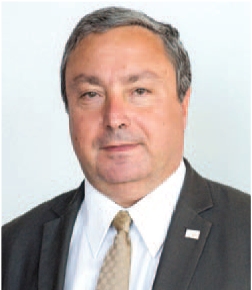Virtual Meeting Series on Electrical Lighting - Technical Presentation Sessions of IAS YPs and CMD Alumni, Part EL1
Jointly hosted by:
- IEEE Winnipeg Section University of Manitoba Student Branch IAS Chapter, Canada
- IEEE Lahore Section University of the Punjab Student Branch IAS Chapter, Pakistan
- IAS Chapters and Membership Department
Local organizers:
- Ms. Sara Mantach, University of Manitoba Student Branch IAS Chapter Chair
- Mr. Muhammad Hamza Ithisham, University of the Punjab Student Branch IAS Chapter Chair
Program cordinators: Ms. Lesley Arakkal, IAS CMD Chair & Dr. Peter Magyar, IAS Director of Chapter Development
Technical Chair: Lesley Arakkal
Agenda:
Prof. Georges Zissis: IAS President, Toulouse 3 University, France: Light beyond Lighting, frontiers in Lighting Technologies: The human-centric intelligent lighting challenge
Ms. Radwa Abdalaal: University of Manitoba, Canada: Power Quality Conditioning Technology for LED Lighting Networks
Date and Time
Location
Hosts
Registration
-
 Add Event to Calendar
Add Event to Calendar
Loading virtual attendance info...
- Contact Event Host
- Co-sponsored by - IEEE Winnipeg Section University of Manitoba Student Branch IAS Chapter, Canada - IEEE Lahore Section University of the Punjab Student Branch IAS Chapter, Pakistan - IAS Chapters and Membership Department
Speakers
 Prof. Georges ZISSIS
Prof. Georges ZISSIS
Light beyond Lighting, frontiers in Lighting Technologies: The human-centric intelligent lighting challenge
Since the human race emerged it has been known that fire and heated objects emit light that can be used for lighting purposes; artificial lighting has been discovered. Since of 19th-century end, artificial lighting has been the subject of a continuous and fascinating evolution;20th century scientists and development engineers worldwide created such a wide range oflighting solutions for every lighting application. Today, the importance and application of these “legacy” lighting technologies is decreasing. During the last decade, Solid-State Lighting (LEDs, O-LEDs, solid-state lasers) challenges conventional technologies. In particular, LED has turned into a game changer beating the conventional technologies in all aspects. It is therefore anticipated that in short term, all of electric lighting will be based on SSLs. Should SSL revolution proceed to the projected conclusion, replacing all legacy technologies, there will be a further major change in the lighting market.
Artificial light production absorbs 15% of the world’s electricity annual production. Therefore, past century’s research and development focused on single energy efficacy enhancement. Consequently, we knowingly were not serving society as effectively as we could. Industry has coined a new term “human-centric lighting” to draw renewed attention to its primary effort to be successful in meeting society’s needs. Furthermore, we are witnessing a transition from the conventional “analogue” lighting technologies to “digital” lighting. Intelligent lighting will become the backbone for smart homes and smart cities. This way, lighting will become the heart of the “Internet of Things”.
Biography:
Georges ZISSIS, PhD, SMIEE, President IEEE Industrial Application Society for the period 2019-20. Vice-Rector Toulouse 3 University.Born in Athens in 1964, has graduated in 1986 from Physics Department of University of Crete in general physics. He got his MSc and PhD in Plasma Science in 1987 and 1990 from Toulouse 3 University (France). He is today full Professor in Toulouse 3 University (France). His primary area of work is in the field of Light Sources Science and Technology. He is especially interested in the physics of electrical discharges used as light sources; system and metrology issues for solid-state lighting systems; normalization and quality issues for light sources; impact of lighting to energy, environment, quality of life, health and security; interaction between light source and associated power supply; illumination and lighting. He is director of “Light & Matter” research group of LAPLACE that enrols 20 researchers. He won in December 2006 the 1st Award of the International Electrotechnical Committee (IEC) Centenary Challenge for his work on normalization for urban lighting systems (in conjunction with IEEE, IET and the Observer). In 2009, he won the Energy Globe Award for France and he got the Fresnel Medal from the French Illuminating Engineering Society. In 2011 has been awarded the title of Professor Honoris Causa of Saint Petersburg State University (Russian Federation) and he was President of the Power Electronics, Electronics, Optoelectronics and System Section of the French National Council of Universities for the period 2014-19.
 Ms. Radwa Abdalaal
Ms. Radwa Abdalaal
Power Quality Conditioning Technology for LED Lighting Networks
Abstract: Poor power quality network, including long and short voltage variations, is directly reflected into visual light flickering in light emitting diode (LED) lighting networks. An active power filter has been proposed as a comprehensive solution to improve grid current and light intensity flickers in a large-scale LED lighting network. The first part of the presentation is intended to gain a better understanding of the characterization of commercial dimmable LED lamps as nonlinear loads. The second part of the presentation proposes a single-phase transformer-less unified power quality conditioner (TL-UPQC) topology with its controls. The topology provides a stable output voltage for a flicker free lighting network. An active power filter injects harmonic and reactive currents to provide unity power factor. A dynamic voltage restorer quickly supports the load voltage for any voltage dip, swell or flickering in the network. Stability of the designed controllers is analyzed by a small-signal modeling technique. In addition, the proposed topology has been utilized as a central dimmer system for LED lamps while maintaining high voltage and current quality.
Biography:
PhD, Research Assistant, Dept. of Electrical & Computer Engineering University of Manitoba, Winnipeg. MB, Canada.

